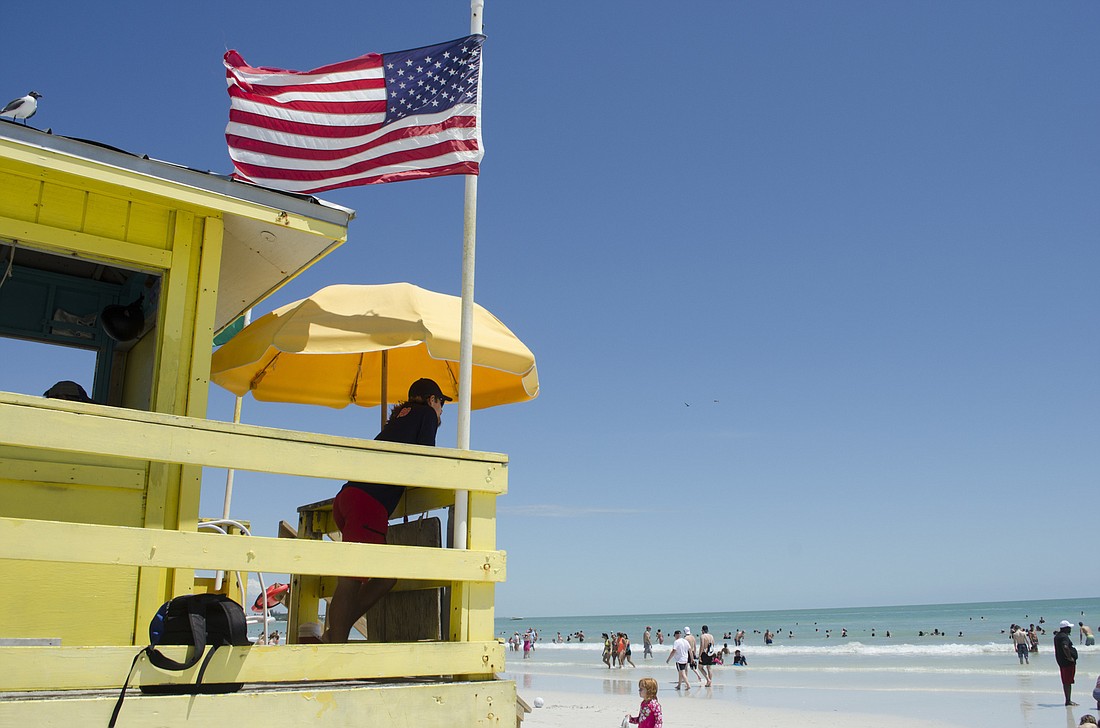- November 24, 2024
-
-
Loading

Loading

Aimee Hoover was a 44-year-old tourist from Pittsburgh, snorkeling with her husband off Siesta Key. Beachgoers found her floating face down, unresponsive.
Timothy Vorsheck, 58, was struggling to swim in rough surf off Longboat Key. A witness tried to reach him, but it took several minutes. Vorsheck was later pronounced dead at the hospital.
A 3-year-old girl from Manatee County was taking a nap with her mother on the couch but wasn’t there when her mom woke up. She was found in a backyard swimming pool.
At least six people have drowned in the Sarasota area since the beginning of the year. In 2015 in Sarasota County, nine people accidentally drowned, according to the most recent statistics available from the Florida Department of Health. Over the last 10 years, the average has been 9.5 annually.
It’s hard to pin down more recent figures, because of the hazy nature of water emergencies: they can be fatal or nonfatal. Some people who drown don’t die immediately, but rather hours or days after being pulled from the water. Some people who die in bodies of water suffer from a pre-existing conditions or some kind of trauma. It’s difficult to identify a cause of death as drowning, so it’s difficult to know this year’s exact number, officials say.
Despite the ambiguity in the figures, with 35 miles of beaches, acres and acres of inland waterways and thousands of pools, Sarasota County has the same problem every county in Florida has when it comes to drowning prevention: there’s water everywhere.
“We’ve got lakes, creeks, pools that people fill up and leave outside, the ocean. Unfortunately everywhere you turn you’re almost always going to hit water,” said Chelsea Arnold, a pediatric nurse practitioner with the Sarasota County Health Department, which is what makes it so important to learn safe practices for being around water.
While pools and standing bodies of water pose an undeniable threat, the 17 beaches in Sarasota County presents a high risk for drownings to both children and adults.
In 2015, in Florida, 131 adults between the ages of 45-64 died by drowning. In particular, beaches with rough waters pose a hazard for adults who may underestimate the affect the conditions will have on their abilities (though to be sure, kids are also at risk for drowning at the beach).
“You need to be very honest with yourself about what your abilities are — not what they were 20 years ago,” said Sarasota County Lifeguard Captain Roy Routh.
The number of drownings in the area this year, Routh said, could be attributed to the weather.
“Lately it’s been extremely common because we’ve had an unusual weather pattern for this time of year,” he said. Mainly, the strong winds that are typical of March have extended into June, bringing choppy waters to beaches.
If the weather poses a threat to beachgoers, colored flags posted around beaches will let you know. A yellow flag means swimmers should use caution. Red means conditions are hazardous. A double red flag means the beach is closed to swimming.
Rip currents, or narrow, fast-moving channels of water flowing back out to sea, are the number one cause of people drowning on Sarasota beaches, according to Routh. Even strong swimmers can succumb to one if they don’t respond correctly.
If you find yourself swimming to shore and not making any progress, the most important thing is not to fight the current. Instead, swim parallel to the shore, then back to shore at an angle. If you can’t escape, float or tread water, and call or wave for assistance from a lifeguard.
The last step — calling for assistance — poses a bigger problem than people think.
“I think everybody’s always under the assumption you’ll always notify somebody, [but] most people that we have who are actively drowning, they don’t say a word,” Routh said.
People who are drowning often have wide eyes, are facing the shore and have their head and arms low in the water. If there’s surf, it will likely be crashing into them, and they may look like they’re trying to climb an invisible ladder out of the water.
Parents with kids at the beach need to always watch their children, said Arnold. If a child is young or a weak swimmer, parents should be within touching distance of them the entire time they’re in water.
“All it takes is a second,” Arnold said. Often, parents with children who have drowned thought someone else was keeping an eye on their child, and that confusion can be fatal. By choosing a designated person to watch children for short intervals, it’s simple for a few adults to watch over kids around water.
The best thing people can do to stay safe on the beach, Routh said, is to always swim near a lifeguard. Only the six most popular beaches are guarded in Sarasota County.
“Pay attention to water conditions,” Routh said. “Know your limitations. And if in doubt, don’t go out.”